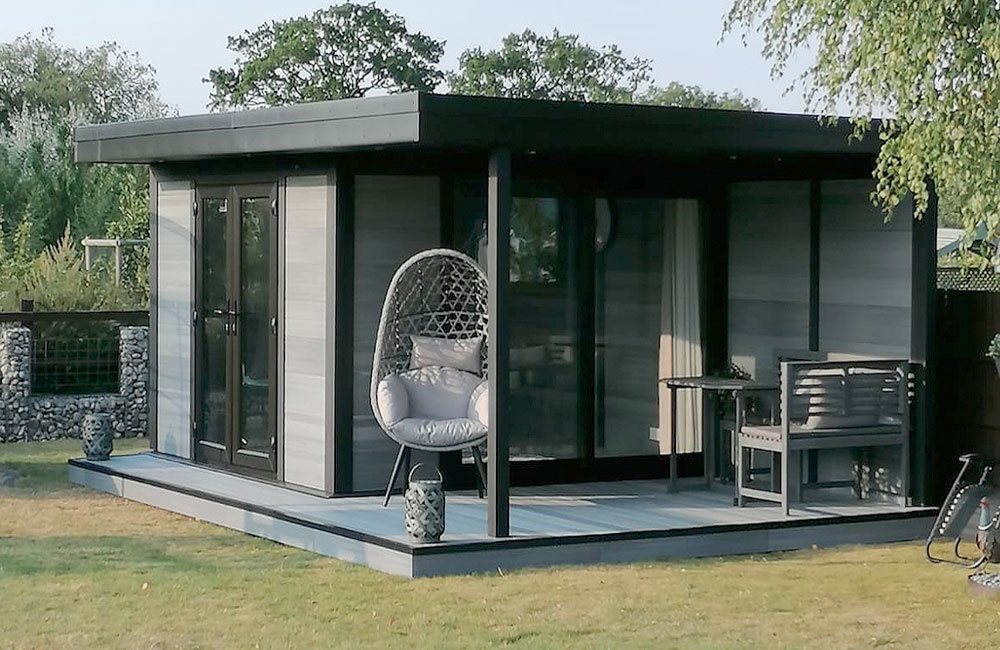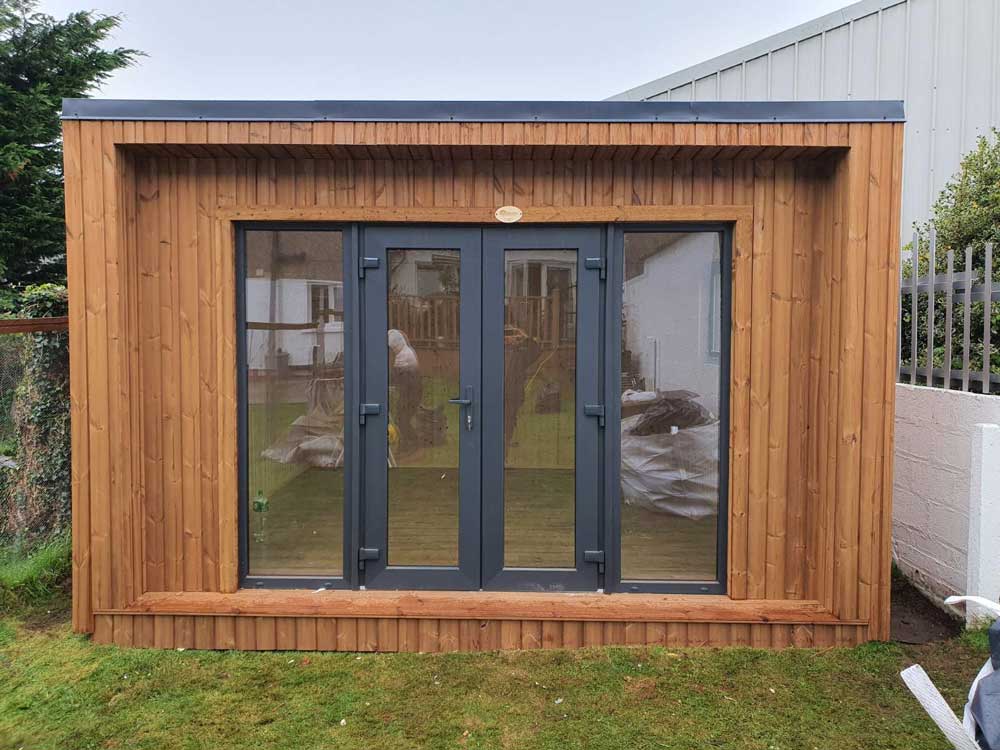Free Tips For Planning Permission For Garden Sheds
Free Tips For Planning Permission For Garden Sheds
Blog Article
What Planning Permission Do You Need For Garden Rooms Etc In Terms Of Highways Concerns?
When planning to build gardens, conservatories outhouses, garden offices, or extension, highways concerns are a major factor that may impact the necessity of planning permission. Here are the main considerations: Visibility and Sight Lines:
Planning permission is required if the new structure blocks the view of drivers coming into and leaving the property or affects sightlines at intersections or curves in the road. The planning authorities will evaluate whether or not the building is a danger to the road.
Distance to the highway:
Planning permission is normally required for buildings that are built near highways, such as extensions or front garden rooms. There are specific distance regulations to ensure that the construction does not interfere with the safe operation of the highway.
Access and Egress
It is likely that planning permission will be needed to make changes to existing or new access points. The egress and access points must be safe to avoid the disruption of traffic.
Parking Provision:
If the proposed structure affects existing parking spaces or needs additional parking, planning permission is necessary. The authority for planning will assess whether the development provides enough parking and doesn't result in congestion of parking on the street.
Traffic Generation
Planning permission will be required for developments that are likely to generate more traffic, like the garden offices which are used as offices for business that have clients on site. The plan will assess what the effect of the local traffic flow and road safety are likely to affect.
Effect on Pedestrian Access
Planning permission is required when the structure proposed encroaches upon pavements or pedestrian paths. The safety of pedestrians as well as making sure that they are able to be able to access the site is essential.
Construction Impact on Highways:
A permit for planning may be required to mitigate the effects of road construction, like heavy vehicle traffic as well as temporary obstacles. The planning authorities are able to establish conditions that minimize disruptions to the road system during construction.
Drainage and Water Runoff
Another aspect to consider is the impact of the development on drainage or runoff. Planning permission ensures that the new structure does not exacerbate flooding or drainage issues that could affect the road.
Street Furniture and Utilities
If the proposed development will affect street furniture (e.g. signs, lamp posts) or underground utilities (e.g. electrical cables, water pipes) Planning permission is needed. Planning authorities will work with other agencies to solve these issues.
Highway Authority Guidelines
Local highway authorities may have guidelines and requirements specific to development near highways. To ensure safety on the road, planning permission is required to ensure compliance with these regulations.
Disturbing and noise from traffic:
The planning permission is needed in the event that the proposed structure is likely to create more noise and disturbance (e.g. A garden office which receives visitors or deliveries).
Accessibility to Public Transport
Developments that could impact accessibility to public transportation facilities, such as trains or bus stops, need planning permission. Planning permission will be needed for any developments that might be detrimental to public transport infrastructure, such as trains stations or bus stops.
Highway safety is a major element in determining if an extension, conservatory, garden room or outhouse, garden office, or extension is approved. Making sure that the proposed development doesn't negatively impact the safety of roads, traffic flow, pedestrian access, and the overall infrastructure is essential. Early consultation with local authorities such as the highway authority and planning authority can address these concerns, and ensure compliance with applicable regulations. Take a look at the top rated cost of building a garden room extension for more tips including how to get power to a garden room, how to lay decking on soil, what size garden room without planning permission uk, my outhouse, what is a garden room, garden rooms, costco garden room, 4m x 4m garden room, what size garden room without planning permission, outhouses for garden and more.
What Planning Permission Is Required For Gardens, Rooms, Etc. In Relation To Height Restrictions?
When planning permission is needed to construct garden rooms, conservatories, outhouses and extension of garden offices to the existing structure, height restrictions must be met. These are the most crucial height-related considerations to keep in your head:
If the roof is pitched in two pitches (such as on the gable) and the maximum height for a detached extension or outbuilding must not exceed four meters.
For any other type of roof (flat, single-pitched, etc. The maximum height cannot be to exceed 3 metres for any other kind of roofing (flat one-pitched, flat etc.).
Distance from boundary:
The maximum height of a structure that is less than 2 meters from the boundary must not exceed 2.5 meters. This is applicable to sheds, garden rooms and similar outbuildings.
Eaves Height:
The maximum length of eaves (the distance between the lowest roof point to the highest eaves elevation) of any building cannot exceed 2.5 metres.
Extensions and conservatories:
For a single-story rear extension the height cannot exceed 4 meters. This includes the roof, and any wall with a parapet.
Side Extensions
Side extensions are restricted to a maximum of 4 meters. They cannot be wider than the home's original size.
Special Roofs
The roofs of structures with a flat surface are generally only allowed to be up to a three meters in height.
Additional restrictions on areas designated for specialization
In conservation zones, Areas of Outstanding Natural Beauty(AONB) and other areas that are designated, stricter limits on height could be in place and planning approval could be required for structures that would otherwise fall within the permitted development rights.
Buildings of National Parks
National Parks structures may also be subject to height restrictions that require permission for planning.
Roof Design:
It is important to consider the size (excluding chimneys, antennas etc.). Consideration should be given to the elevation of the top part of the roof (excluding chimneys, antennas, etc.). If the highest point exceeds the allowed limits of development, permission for planning is required to be obtained.
The impact on neighbours:
Even if you're not within the maximum height allowed and width, a permit for planning may be required for the construction of a structure if they have an impact on the view, privacy, or sunlight of neighbouring properties.
Maximum Height:
The overall height of any structure must not exceed 4 meters. A garden office built with roofing that is dual-pitched, for instance, cannot be higher than 4 meters.
Decking or Platforms:
Decking and platforms attached to the structure cannot elevate the level of the ground by more than 0.3 m in order to not require planning permission.
Always visit your local planning authority's website to see any new rules or changes. Even if your project falls within the development rights that are permitted in general law, local variations and property requirements could require permission for planning. See the top garden office near me for blog examples including luxury outhouse, armoured cable for garden room, garden outhouses, 4m x 4m garden room, garden outhouse, ground screws vs concrete, my outhouse, garden room heater, outhouse for garden, garden room permitted development and more.
What Is The Planning Permission Required For Garden Rooms Etc. In Relation To Utilities And Infrastructure
Planning permission can be required to construct garden rooms, outhouses or gardens offices. Infrastructure and utilities are additionally important aspects to consider. Here are the major aspects to take into consideration. Water Supply and Drainage
Planning permission might be needed when the building is required to have connections to the water supply or drainage systems. The local authority for water might have to consider the effect on local water supply and sewage systems.
Electricity and Gas Connections
If you want to connect a building to an electric or gas supply, you might require an authorization for the project. Compliance with building regulations and safety standards is essential to connect these lines.
Utility Easements
Planning permission is required for structures which are situated within easements (areas set aside for utility lines and infrastructure). The construction in these areas could require the approval of the local utility provider.
Septic Tanks and Sewage Systems
If the building is going to require a septic system or an on-site treatment system to treat sewage, planning permission will be required. This system must adhere to the health and environmental regulations.
The drainage of Surface Water Management
Planning permission may be required in order to manage runoff from surface water and drainage of the proposed structure. Measures to prevent flooding, erosion, and water pollution may need to be put in place.
Access to Utilities for Construction
Planning permission could be required if temporary utilities are needed (such as water for building). The temporary connection has to meet the standards of safety and environmental protection.
Impact on local infrastructure:
It is crucial to obtain permission to plan in order to determine the impact the construction will have on local infrastructure. This includes utilities, roads as well as other public services. Local authorities will evaluate the existing infrastructure's capacity to handle the development.
Waste Management and recycling:
Planning permissions may include requirements regarding recycling and disposal of waste both during and after construction. To reduce environmental impact, there must have provisions in place for recycling and waste disposal.
Efficiency in Energy Efficiency:
You might require permission for the installation of renewable energy systems such as solar panels or heat pumps in new structures. Building regulations and environmental standards must be adhered to.
Telecommunications as well as Internet connectivity:
Planning approval is required for any new structures that require Internet or telecommunications connections. The compliance with standards and regulations for the telecommunications infrastructure is vital.
Access to Roads and Footpaths
Planning permission may be required to create or modify access roads and footpaths to the new structure. The construction of roads and footpaths must adhere to the safety standards of all construction sites.
Accessibility to Public Transport
If the new structure impacts access to public transport facilities (such as bus stops or train stations), planning permission may be required. The public transport infrastructure must conform to all rules and standards.
In the end, utilities and infrastructure considerations are critical factors in determining the need for planning permission for conservatories, garden rooms outhouses, garden extensions, offices or other buildings. A prompt consultation with your local authority is vital to ensure compliance with the applicable regulations and standards. Read the best heater for summerhouse for website advice including outhouse for garden, garden room permitted development, outhouse builders, what size garden room without planning permission uk, garden room, out house for garden, garden room conservatory, herts garden rooms, outhouses, garden room heater and more.